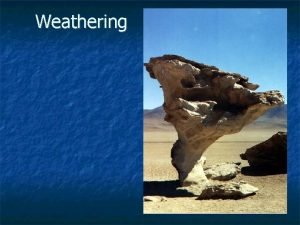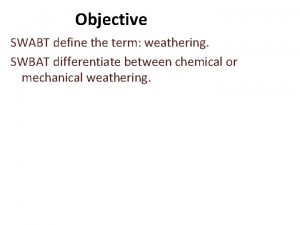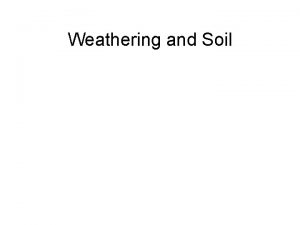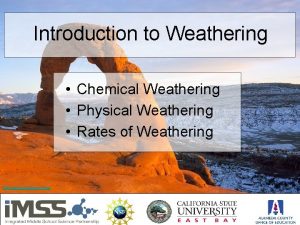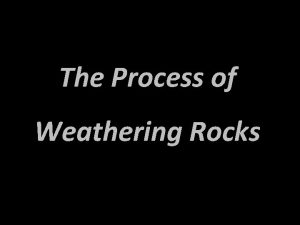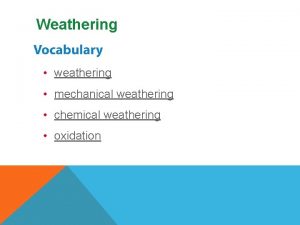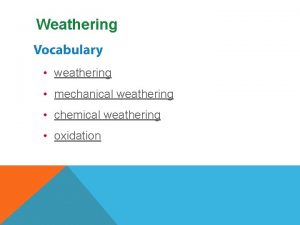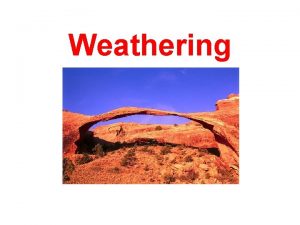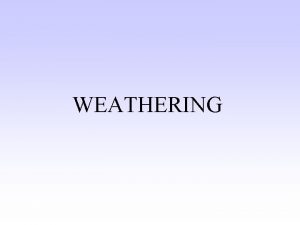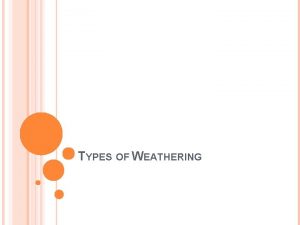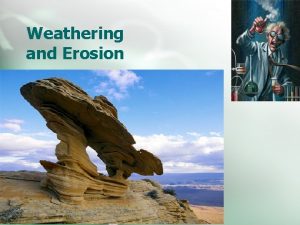Rocks and weathering Rocks What are rocks made







- Slides: 7

Rocks and weathering

Rocks • What are rocks made of? • What do you know about the Earth, apart from it being the planet where you live? For a start its veryold, around 4600 million year. It has a central part called the core which is made of iron and a bit of nickel. The core is very hot indeed. Around the core is a hot semiliquid rock layer called the mantle. Covering this is the cooler solid surface layer that we live on. This is called the crust, made of rocks and minerals.

What is a mineral? Mineral Name Chemical Photo Name haematite iron oxide malachite copper carbonate diamond carbon quartz Silicon dioxide • Minerals are the solid substances that make up the Earth’s crust. Minerals have a definite composition, a reagular structure and are often a single colour. Most minerals are compounds, though a few are elements. The table shows some minerals.

What is a rock? • A rock is a mixture of minerals. The minerals are in little pieces called grains. • In some rocks the grains are large and you can see them with the naked eye. If a rock has a mixture of grains, it might look multi-coloured or speckled. • Other rocks are crystalline. They have smooth faces which reflect light and so appear shiny. The grains have formed crystals that fit together so you can’t see the individual grains. Atoms of elements Molecules of compounds Grains of minerals Fragments of rock Large pieces of rock Outcrops of rock

Classifying rocks – the rock kingdoms • Geologists identify rocks by looking at properties such as colour, hardness, texture, how they split up when hit (cleavage) and their chemical behaviour. • Rocks can be made up of many different minerals, so their properites can vary. • The easiest way to classify rocks is by where they have come from. This splits the rock world into three different rock types. • Igneous rocks are formed when the molten rock inside the Earth cools and solidifies. • In this piece of granite you can see the interlocking grains of minerals – white feldspar, ligt grey quartz and dark mica.

Classifying rocks – the rock kingdoms • Sedimentary rocks • Sedimentary roсks are formed from material that is laid down in layers. • In this small sandstone you can see the small rough grains that have settled out from the waterm, loosley cemented (joined) together. • Metamorphic rocks are formed when high temperature and pressure change other rocks. • This schist has a glittering surface, banded layers and small crystalline grains.

Investigating texture • Hannah put a sample of granite into a beaker of water and a sample of sandstone into another beaker of water The table shows her observations. • Sandstone has a more porous texture than granite. In sandstone, the grains do not fit closely together (they do not interlock) so there are small gaps which fill with water. Grains interlock more closely in glassy and crystalline rocks than in rough-textured ones. Rock Observations Granite no bubbles Sandstone bubbles Inference (conclusion) does not absorb water absorbs water



